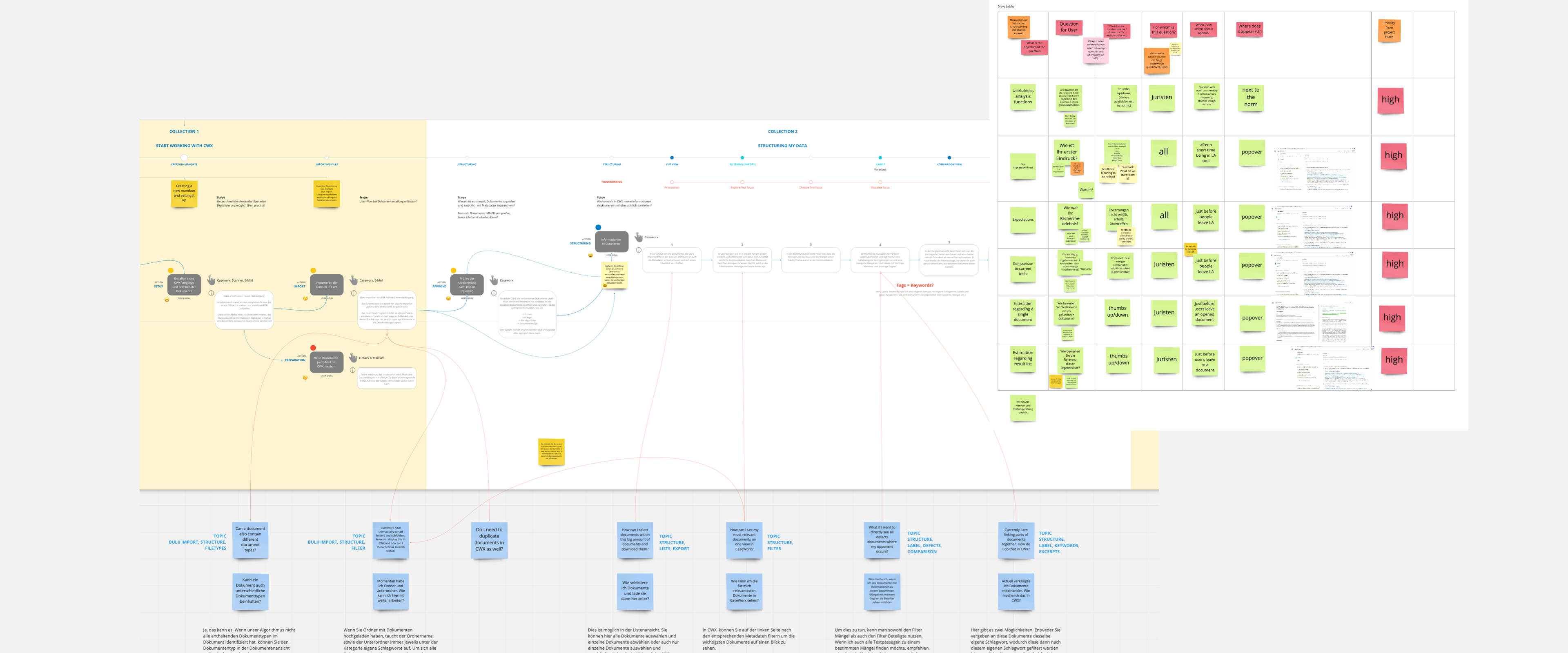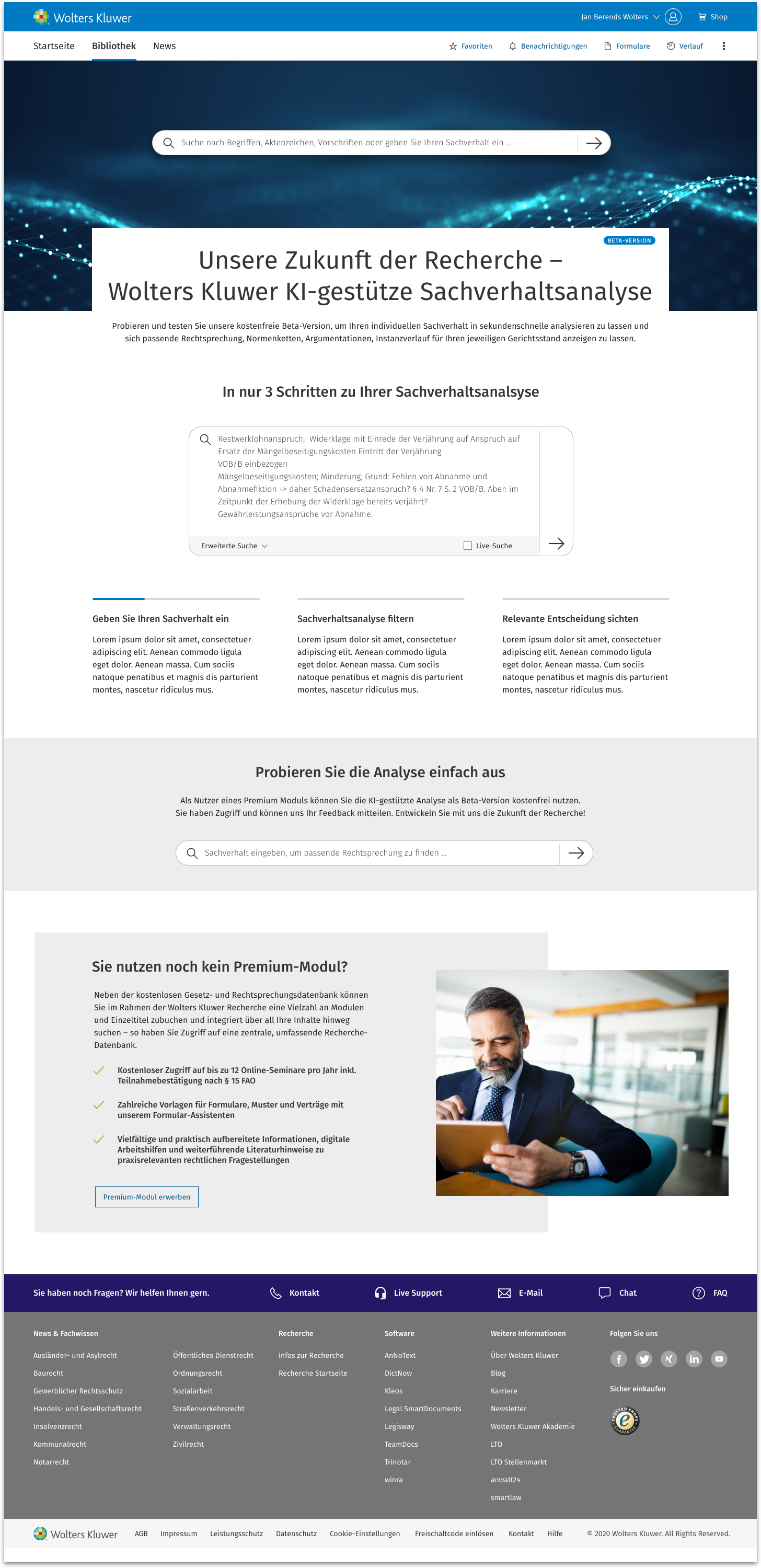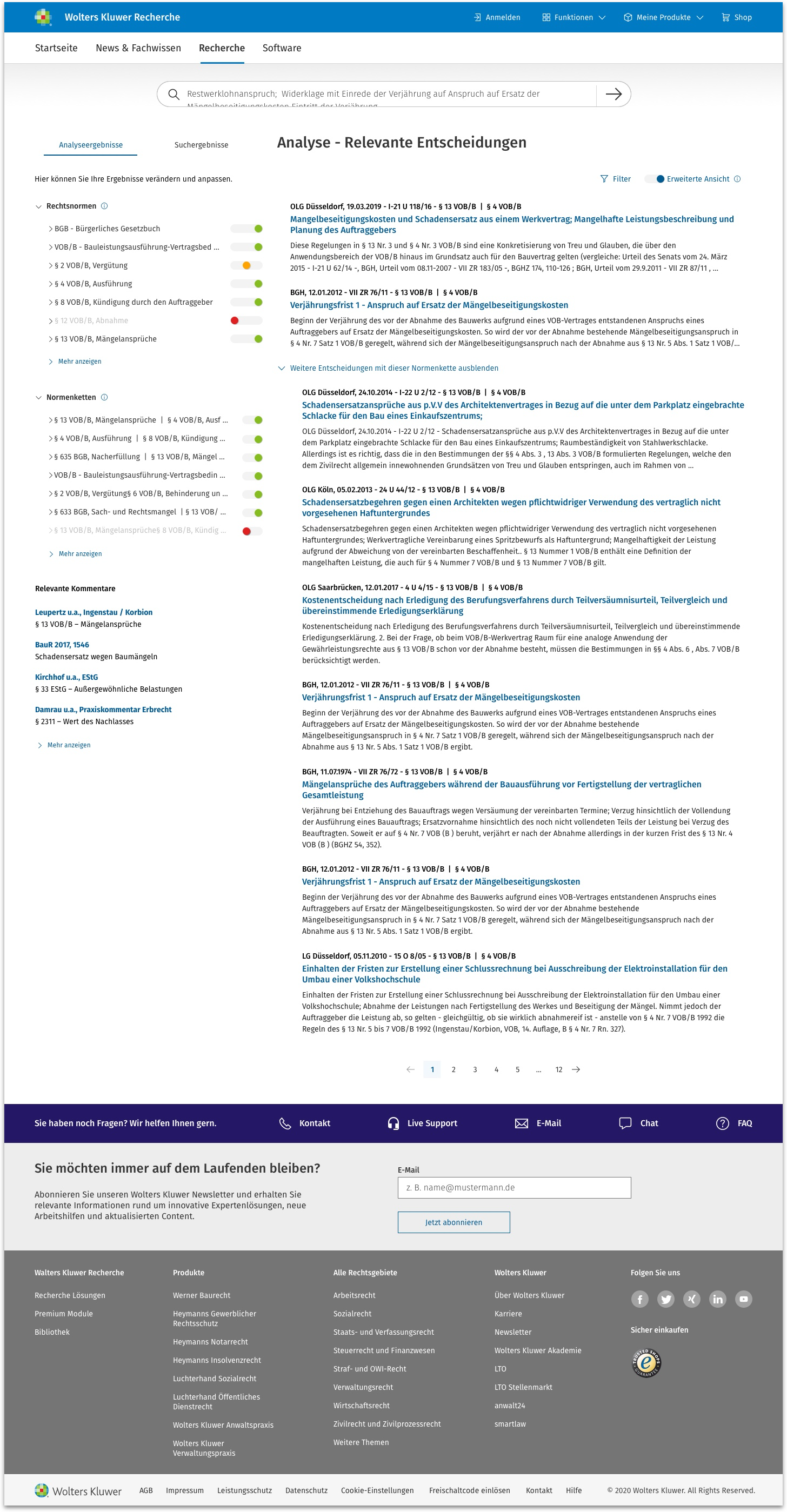AI-Based Legal Analytics
B2B Product
• New Product • UX • UI • Prototyping
2021
Function of an existing legal research solution within a digital workspace. The legal AI analysis functions enable the user to find the most relevant legal decisions for his facts without knowing the legal standards and decisions.

User Journey
Question voting for prioritising for beta survey
My role and responsibilities
- Contextual survey of the target groups
- Requirements elicitation, analysis (qualitative) and process flow with flowcharts and wireframes
- Design of prototypes and mockups
- Definition of KPIs for user feedback in beta rollout
Used methodologies
- Focus groups, interviews and user observation
- Ideation, exploration and discovery in a cross-functional team
- Click dummies for user tests and interviews
- Evaluate user data and create recommended actions for sprint iterations
Software tools
- Collaboration with Miro
- Evaluate Insights with Dovetail
- Design tool sketch
- Micro Interactions with FramerX
- Developer documentation with Invision

AI-assisted analytics

Analytics result page with expert filtering

Legal decisions for subscribers
The story behind
Expansion of the existing research platform for legal content to include the functionality of AI-supported analysis of facts. Target group are lawyers and in-house counsel - status 2021.
The idea
An integrated research platform with search, retrieval and factual analysis of legal issues. The search is available to all of the company's software solutions and can be contextually narrowed down to individual areas of law.
The scope
The process of analysis runs in the background and is not transparent. In the interviews, users emphasized the desire for control and trust in the content. Ease of use and interface are reduced to the essentials (trust) and the analysis result is largely configurable (control).
- Continuous user surveys with prototypes
- Contextual inquiries with users
- Gathering user and stakeholder feedback
- Continuous delivery of changes (two-week sprints)
- Implementation of data analysis for qualitative and quantitative feedback
- Beta rollout with extensive measurement of UX KPIs